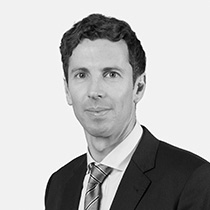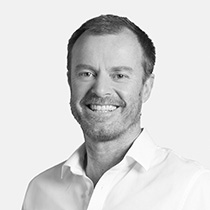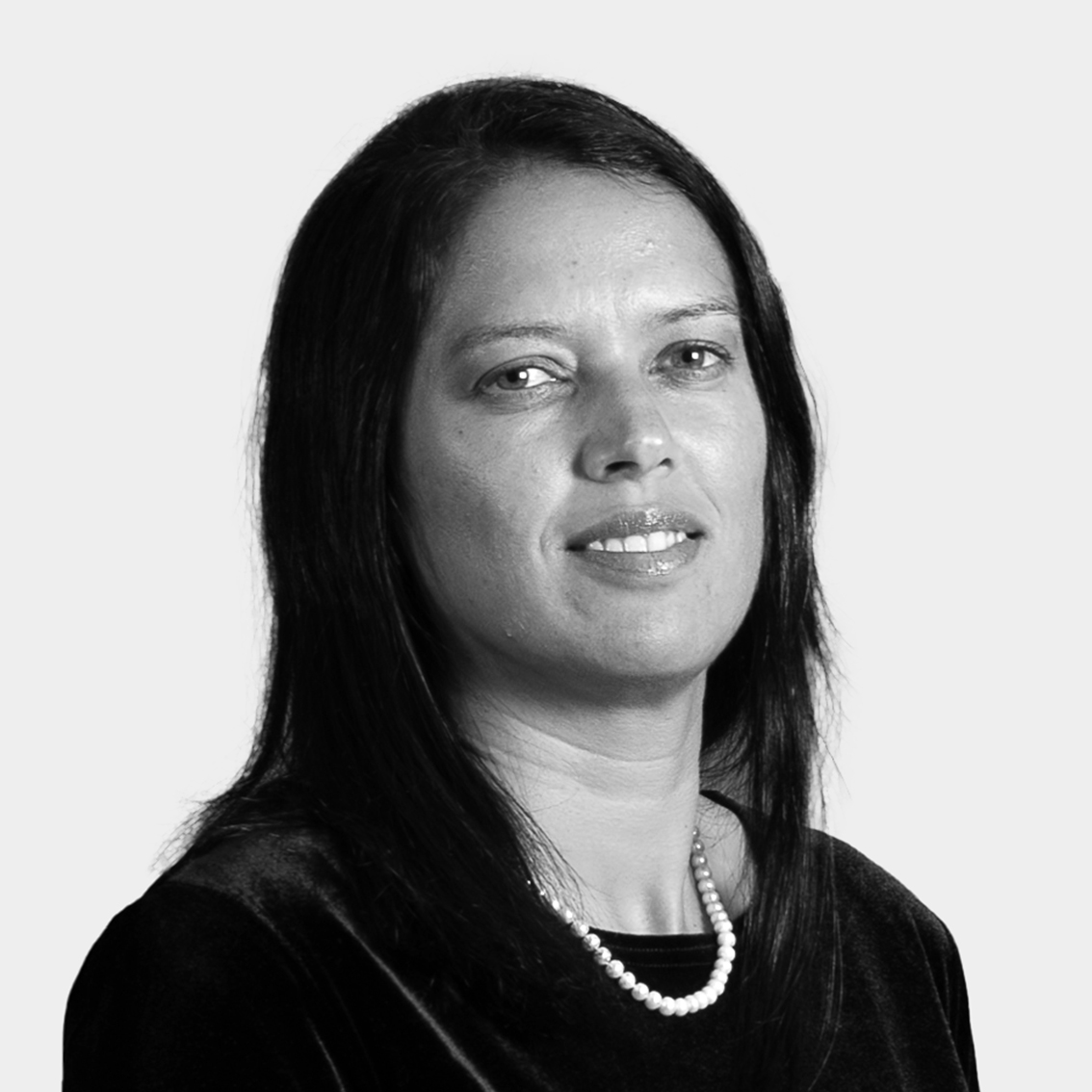Global Equity Select returned 5.6% for the quarter under review (Q2-21) and 14.6% p.a. over five years. Global Managed returned 4.3% for Q2-21, 24.9% over one year (with the strong market recovery evident), and 9.2% p.a. over five years. Global Capital Plus returned 3% for Q2-21, 12% over one year and 5.2% p.a. over five years.
Equifax, one of the three largest US credit bureaus, is a more recent addition to the portfolios and has contributed to performance from the get-go. Credit bureaus effectively collect information on all credit-active individuals and sell this data and associated analytics to banks and other credit providers, who use it to gauge the riskiness of a loan. These are advantaged businesses – high barriers to entry, pricing power and operating leverage translate into highly recurring, highly profitable revenue streams. At the time of our purchase, we did not think the market fully appreciated an inflection in Equifax's growth.
Equifax had lagged the rest of the sector since it fell victim to a large-scale data breach in 2017, where personal information on 148 million individuals was compromised. This event spurred significant change in their business. Under a new management team, it has spent $1.25 billion on a new IT platform, moving all its data and applications to the public cloud. While this has been a painful process, it has allowed the company to reduce costs and materially accelerate the pace of new product development. We saw concrete evidence of this towards the end of 2020 and further momentum early in 2021.
Equifax’s biggest differentiator, though, in our view, is its Workforce Solutions business (EWS). Painstakingly built over a number of years by building relationships with employers and payroll service providers, it has the largest national employment and income verification database. During the past year, it surpassed a key level of having more than half of the non-farm US payroll in its database. In our view, this business has reached a tipping point, where the penetration is sufficiently high for clients to embed EWS in their workflow, resulting in more frequent usage and sticky relationships. Despite its dominance (no competitor comes close), there is still a long runway for growth for EWS, as they expand the dataset and launch new product applications.
Finally, Equifax is heavily exposed to the mortgage market. With interest rates remaining low, a wave of mortgage refinancing over the past year has increased demand for credit reports and employment verification. It has benefited disproportionately from this growth in the mortgage market, and there is some justified concern that revenue growth could stall when the mortgage market cools. We claim no special insight in guessing when that may be, but believe the long-term penetration growth in EWS, as well as a cyclical recovery in non-mortgage related lending, should provide sufficient offset. With the price up over 40% since March, we think many of these favourable characteristics are now closer to being priced in.
In contrast, JD.com is a long-standing position, owned since May 2014 when the company listed. JD is the second-largest e-commerce retailer in China, with 500 million customers reported at the end of March, compared to 387 million in the comparable period a year ago, with management aiming to gain a further 100 million in the year ahead. Customer growth has been driven by a greater assortment and improvements in fulfilment. Their incredible logistics arm employs 200 000 people and has more than 1 000 warehouses, giving them almost complete geographical coverage of this massive country - all within their own control. More than 90% of orders are delivered either on the same day or the next day. Customer loyalty is most evident when looking at purchase frequency and spend, which have increased four-fold and five-fold respectively since 2015.
JD has been effective in incubating new business units, with the most notable being JD Logistics (described above), and JD Health (an online health platform). Both have been separately listed successfully, with the holding company retaining 64% ownership in JD Logistics and 69% ownership in JD Health. This dynamic is important to consider when thinking about the implied valuation for the core retail business. The entire group has a market value of $118 billion but the market value of their listed stakes ($50 billion), together with the most recently reported net cash ($19 billion), means the market values the retail arm at around only $50 billion. The core retail business should generate $135 billion in revenue this year at a 4% EBIT (earnings before interest and taxes) margin. We believe this margin is well below normal, which could potentially be high single digits. If you apply a conservative 6% EBIT margin and the statutory 25% tax rate, the core retail business trades on less than 9 times earnings for this year. Even at the current 4% margins, the multiple is only 12 times earnings for a company growing top line at 20% p.a. This analysis ignores other balance sheet investments that they have, namely, JD Technology (fintech and cloud) and JD Property, which is increasingly housing their physical logistics assets off-balance sheet by bringing in capital partners.
A final point worth considering is that the increased scrutiny of the technology sector in China could potentially benefit JD’s retail business. They have historically been hurt by ‘pick one’ tactics, whereby a brand that sells on multiple platforms is penalised on Alibaba’s platforms. These tactics have resulted in JD offering an inferior assortment for some key categories, such as fashion and beauty products. With the banning of these tactics by the regulators, merchants have been free to sell all products on all platforms, which should further improve the customer value proposition. The share is down around 25% from its peak in mid-February this year and offers around 100% upside to fair value, in our view. This is extremely attractive in both absolute and relative terms, and JD is thus a 3.5% position in Global Equity Select, 2.1% position in Global Managed and 0.8% in Global Capital Plus.
At quarter-end, Global Managed was positioned with 75% in growth, or risk, assets comprised of the following:
- 59% effective equity
- 4% in property
- 5% in infrastructure
- 5% in convertible instruments
- 5% in high yield credit
The remaining 25% of Global Managed is invested in either more stable assets or diversifying assets, which we think are attractive in their own right and have a lower correlation to equities:
- 7% in commodities
- 5% in inflation-linked bonds
- 6% in absolute return / hedged equity positions
- 10% in investment-grade fixed income
As highlighted in prior commentaries, we continue to feel that the fundamental diversification evident in this portfolio construction is both more appropriate and more robust than that of Global Managed’s benchmark, which includes a 40% weighting to the Bloomberg Barclays Global Aggregate Bond Index. As a reminder, the Index as a whole offers a low nominal expected return and a negative real return. Setting this meagre return against the risks, which we feel are significant, including huge budget deficits and elevated debt levels, suggests to us that this offers a poor risk-reward trade-off and that investors will do well to avoid these instruments. In our view, they will be better served over the long term by holding a blend of fundamentally attractive growth assets and more stable diversifying assets, as outlined above.
At quarter-end, Global Capital Plus was positioned with 48% in growth, or risk, assets comprised of the following:
- 28% effective equity
- 5% in property
- 4.5% in infrastructure
- 2% in convertible instruments
- 8.7% in high yield credit
The remaining 52% of Global Capital Plus is invested in either more stable assets or diversifying assets, which we think have a lower correlation to equities:
- 8% in commodities
- 2% in inflation-linked bonds
- 7% in absolute return / hedged equity positions
- 35% in investment-grade fixed income (primarily 14% in short-dated Treasury bills, and 19% in investment-grade corporate credit)
As highlighted in prior commentaries, we continue to feel the fundamental diversification evident in our portfolio construction, with the duration of the fixed income holdings kept very short, is both more appropriate and more robust than Global Capital Plus’s cash benchmark or a significant position in developed market bonds.
Markets are at record highs, and, considering the context of historically solid returns coupled with near-term multiples on the high side, it would seem reasonable for investors to temper future return expectations. But as a reminder, we don’t own the market. In fact, the funds’ concentrated equity holdings look quite different to the market, and, in our view, are qualitatively more durable, higher quality, and are well placed to deliver attractive returns over the long term.
Thank you for your continued support and interest in our funds.
Portfolio managers
Neil Padoa, Humaira Survé and Louis Stassen
 South Africa - Personal
South Africa - Personal




